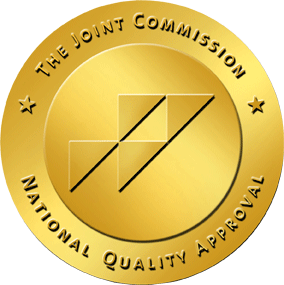Bipolar symptoms in women can be hard to recognize because they often look like stress, mood swings, or hormonal changes. But if your emotions shift between extreme highs and deep lows, it may be more than just a bad day.
Becoming aware of the signs can help you take control of your mental health. So, how can you identify these symptoms in women and find the right support?

What Is Bipolar Disorder?
Bipolar disorder is a mental health condition that causes extreme mood swings. You might feel very happy and full of energy one moment, then suddenly feel very sad and tired.
Bipolar disorder is not just regular mood swings. The highs and lows can last for days or even weeks and can be very intense. It’s a medical condition that needs proper care and treatment. If you or someone you know experiences these symptoms, it’s important to seek help from a doctor or mental health professional.
How Bipolar Symptoms Differ in Women
Bipolar disorder affects both men and women, but the way it shows up can be different between the two. As a woman, you might notice certain patterns in how the disorder affects you compared to men.
According to a study published in the Psychiatric Clinics of North America journal, women experience more depressive episodes, mixed mania, and rapid cycling than men. They are also more likely to have Bipolar II disorder, which involves more depression than mania.
Women with bipolar disorder often have other health issues, such as thyroid disease, migraines, obesity, and anxiety disorders, while men with bipolar disorder are more likely to have substance use disorders (SUDs). These additional conditions can make recovery harder for women.
Although men and women respond to mood stabilizers in similar ways, women may experience delayed diagnosis and treatment. Managing bipolar disorder during pregnancy and breastfeeding is difficult because many medications can affect the baby.
Pregnancy itself does not make bipolar disorder better or worse, but the risk of relapse is high after childbirth. Some women may need medication during pregnancy or after giving birth to prevent mood episodes. Doctors must carefully weigh the risks and benefits to protect both the mother and baby.1
Common Symptoms of Bipolar Disorder in Women
There are two main phases of bipolar disorder: manic episodes and depressive episodes. Some people also experience mixed episodes, where they feel both high and low emotions at the same time.
Below are brief explanations of each episode:
Manic Episodes
During a manic episode, you may feel overly excited, confident, or full of energy. You might talk very fast, jump from one idea to another, or take on too many tasks at once.
Some women make risky choices, like spending too much money, driving dangerously, or making sudden life decisions. You may also have trouble sleeping but still feel energized. In severe cases, mania can cause hallucinations or delusional thinking.
Depressive Episodes
A depressive episode is the opposite of mania. You may feel deeply sad, hopeless, or empty. Even simple tasks like getting out of bed or taking a shower may feel impossible.
You might lose interest in things you used to enjoy and struggle with guilt or low self-worth. Many women also experience changes in appetite, sleep problems, and thoughts of self-harm or suicide.
Mixed Episodes
Sometimes, mania and depression happen at the same time. You might feel restless and full of energy but also sad and hopeless.
This can be confusing because your emotions seem to contradict each other. Mixed episodes can be especially dangerous because they increase the risk of impulsive actions, including self-harm.
If you notice these symptoms in yourself or someone you know, seeking professional help is important. Treatment can help you manage mood swings and live a stable, healthy life.
How to Seek Support
Bipolar disorder can be managed, but you need the right support. Knowing when to get help is important for your well-being.
Identifying the Red Flags
If mood swings are making it hard for you to work, study, or maintain relationships, it may be time to seek help. Warning signs include:
- Extreme mood changes that last for days or weeks
- Trouble sleeping or sleeping too much
- Risky behavior, like overspending or reckless driving
- Feeling hopeless or empty, or thinking about self-harm
- Losing interest in things you once enjoyed
If you or someone you know has thoughts of self-harm or suicide, reach out to a professional or a trusted person immediately.
Therapy and Medication for Bipolar Disorder
Treatment usually includes therapy and medication. Mood stabilizers help control mood swings, while therapy can give you the tools to manage emotions and stress and improve your relationships.
A doctor may also recommend antidepressants or antipsychotic medication, depending on your symptoms. It’s important to follow your treatment plan as prescribed and talk to your doctor if you have side effects. Stopping suddenly can make symptoms worse.
Everyone responds differently to treatment, so it may take time to find what works for you. Stay in touch with your doctor and therapist, and don’t be afraid to ask for help when you need it.
Lifestyle Changes That Can Help
Medication and therapy work best when combined with healthy habits. You can manage bipolar disorder better by:
- Sticking to a regular sleep schedule
- Eating a healthy diet
- Exercising regularly
- Cutting out alcohol and drug use
- Reducing stress through relaxation techniques
These small changes can help stabilize your mood and improve your overall well-being.
Finding a Support System
You don’t have to go through this alone. Support from family, friends, or a mental health group can make a big difference.
How to Talk to a Healthcare Provider
If you’re unsure how to start, tell your doctor about your mood swings, sleep patterns, and any troubling thoughts. Be honest about how bipolar disorder is affecting your life. Your doctor can help you find the right treatment plan.
Support and Treatment Options
Many treatment options exist, from inpatient care for severe episodes to intensive outpatient programs that provide therapy and medication management. Support groups also help you connect with others who understand your struggles.
At OceanRock Health, we are dedicated to guiding you through every phase of recovery as you deal with bipolar symptoms in women. No matter if you need detox, inpatient care, or outpatient support, our compassionate team is here to help.

Source:
- Arnold, L. M. (2003). Gender differences in bipolar disorder. Psychiatric Clinics of North America, 26(3), 595–620. https://pubmed.ncbi.nlm.nih.gov/14563100/








